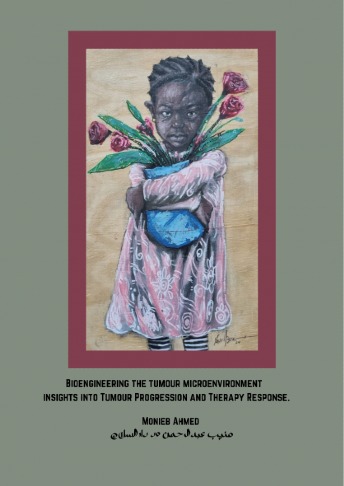PhD defence M.A.M. (Monieb) Ahmed
| When: | Tu 25-02-2025 11:00 - 12:00 |
| Where: | Academy Building |

Bioengineering the tumour microenvironment in vitro: insights into tumour progression, and therapy response
Solid tumours exist within a dynamic and heterogeneous microenvironment shaped by physicochemical gradients that influence tumour cell metabolism, proliferation, invasion, and therapy response. This thesis presents advanced in vitro models designed to recapitulate key features of the tumour microenvironment (TME), including oxygen and nutrient gradients as well as physical cues. Using micromilling and melt electrowriting, these models provide physiologically relevant platforms for studying tumour progression and therapy response. Three models were developed: a spheroid-on-a-chip system to investigate tumour recovery and repopulation after repeated chemotherapy exposure, a microfluidic device to simulate oxygen gradients, and a hybrid 3D scaffold system to examine tumour cell migration. Results demonstrated that tumour cells undergo distinct adaptive mechanisms during chemotherapy recovery, with molecular responses varying based on exposure duration and recovery time, suggesting that tumour cell plasticity is a key factor in treatment resistance. In the microfluidic model, tumour cells established oxygen gradients, though challenges such as vertical gradients and delayed gradient formation were observed. Collagen concentration and cell density influenced oxygen distribution, with higher matrix densities inducing hypoxia-like conditions. The scaffold-based system revealed distinct migration patterns, with MDA-MB-231 cells exhibiting leader-follower dynamics, while T47D cells displayed collective movement with strong cell-cell adhesion. The model also showed that that scaffold architecture and matrix stiffness regulated tumour cell motility, influencing invasion potential. Together, these models provide insights into tumour cell plasticity, migration, and therapy resistance, offering platforms for studying cancer progression and developing targeted treatments that exploit tumour adaptation.
